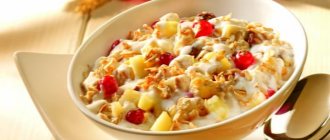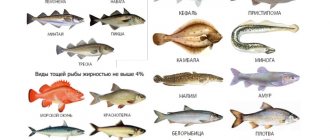Features of breastfeeding
Ideally, a 3-month-old baby should receive plenty of breast milk. And such feeding should be maintained for at least a year, and even better, until the baby turns 2 years old.
The norm indicated for a child who is 3 months old should be quite conditional. It is best to use demand feeding. And it can happen more often than once every three hours. But some doctors still advise maintaining intervals and trying not to spoil the baby by giving him the breast every 5 minutes. Feeding a child who is 3 months old and up to one year old must follow a certain regimen. This is the only way to develop healthy eating habits in your child.
Proper nutrition is an important stage in the development of a baby - both for one who is 3 months old and for a baby up to one year old. In addition, with the help of breastfeeding after childbirth, the female body recovers. The uterus contracts and returns to normal faster. Proper feeding after childbirth is also quite difficult to establish. Moreover, at first the mother is just getting used to the process of breastfeeding, and just when the baby turns 3 months old, this process settles down.
Diet
Children who eat formula should be fed strictly according to the schedule. They should receive food six times a day with short breaks: during the day - 3.5 hours, at night - 6 hours. Minor “deviations” in the diet (10-20 minutes) are considered normal.
Daily requirement for infant
makes up one sixth of its weight. The normal weight of a child at this age is from 4.8 to 7 kg. A baby weighing 6.5 kg needs to eat 1.08 kg of formula per day, 180 ml per feeding.
An artificial child must drink water. You can give your baby something to drink while feeding. You need to feed your child from a spoon. The norm is no more than 2-3 teaspoons at a time. Large amounts of water will overload the kidneys.
In a baby
The diet is somewhat different. He doesn't need water, he gets it from his mother's milk. A breastfed baby needs the same amount of food (the norm is a sixth of the weight), but the baby will be attached to the breast more often - 7-8 times a day, so he will eat less at one feeding - 154 ml.
A nursing mother cannot see how much the baby has eaten; she has other methods of “control”, the most common of which can be considered the so-called “wet diaper” method. So, if an infant pees 6–12 times a day, there is enough nutrition, but if less than 6 (an additional signal will be weak weight gain), then you should think about stimulating lactation, or additionally feeding the baby with formula.
Artificial feeding: what are its features?
It is not always possible for a young mother to be able to breastfeed after giving birth. In this case, the best thing to do is not to wait for breast milk, but to choose the right mixture.
After the birth of the baby, in the absence of breast milk from the mother, the child begins to be fed with special food. Today there is a fairly wide selection of such cans in stores, so choose one that is suitable for your child. Formula feeding is not much different from feeding a baby milk. The same norms and rules must be followed, as well as dosages.
The main thing is the correct implementation of disinfection procedures. It is necessary to strictly sterilize jars and nipples, and also use special water. Feeding a child when he is 3 months old (up to a year, in principle the same rules remain).
The first formula feeding after childbirth should be specially calibrated. After all, formula is not the most familiar and natural food for a child who has not yet reached one month or 3 months. After birth, it is better to feed him with mother's milk. But if you have nothing to choose from, then there simply won’t be any other options.
By the age of one year, the baby’s digestion is developing. In a baby who is 3 months old, the stomach and intestines work better. Therefore, already after the first time after giving birth, he begins to slowly rebuild. Proper nutrition, including mixtures, should contribute to the proper adjustment of the baby’s digestive tract.
Breastfeeding at 3 months
The daily menu of a three-month-old baby still consists of mother's milk, which he receives on demand. However, at this age, most children have their own diet: they “ask” to eat every 2.5-3 hours.
If there is enough milk, the baby does not need water or additional formula feeding.
Psychologists note that at the age of three months, babies experience their first “growth crisis.” It can manifest itself in the fact that the child will literally “hang” on the chest throughout the day, or, on the contrary, turn away from the mother, refusing to eat. The child demonstrates this behavior for several days, then everything returns to normal.
This is a serious test for lactation, but if the young mother survives it, then in the future she will be able to breastfeed for a long time.
Mixed feeding: what are its features?
Sometimes after giving birth, at first, a young mother does not have enough milk6 to feed her baby. At the same time, no one has canceled the necessity and need for nutrition. Therefore, they are starting to use a mixed feeding option.
This allows you to intensify breastfeeding, and at the same time helps the baby to be satiated and fully develop. After childbirth, the mother’s body may be exhausted and lack the strength to organize proper feeding.
Mixed feeding should be carried out according to a certain pattern. In order not to upset the balance, a young mother must first breastfeed her baby. This allows her to normalize her health during the first time after childbirth. And only then begin supplementary feeding with the mixture.
In this case, it is recommended to determine dosages literally by eye and together with a doctor. This option of feeding after childbirth and up to a year is one of the gentle options, especially in such situations, when various kinds of problems arise with the usual option.
Features of feeding a baby at 3 months
- A nursing woman should take into account that a newborn’s need for nutrients per unit of body weight is higher than that of an adult.
- During this period, a woman needs about 3500 kcal per day.
- With a volume of one feeding of 150 ml, the daily amount of breast milk approaches 850-900 ml with 6 feedings a day.
- The need for vitamins remains high at this age.
At three months it is permissible to expand your food intake. A woman need not worry about what she can and cannot eat. Almost everything is allowed; a period of lifting restrictions begins, unless the child suffers from food allergies.
The same principle remains as before: you need to eat tasty, familiar food. When a woman eats deliciously, she produces a lot of gastric juice and enzymes. The food is digested well and the milk is rich in nutrients.
Also good news: there are no diseases related to the diet of a nursing woman. The mother will not be able to seriously harm the child with her diet, unless she takes medications and does not abuse other drugs harmful to health (alcohol, smoking).
Monotonous food with limited protein and vitamins contributes to anemia and there is a threat of iodine deficiency. But this is a separate topic and such pathology does not appear without additional reasons.
The daily diet of a breastfeeding woman should contain:
- 100–130 grams of protein food,
- 100 g fat,
- 400–500 g carbohydrates,
- Food should be rich in mineral salts, especially calcium and phosphorus, as well as vitamins.
A diet consisting of:
- 180-200 grams of meat;
- 800 grams of vegetables and fruits;
- no more than 500 grams of bread;
- 50 grams of butter;
- one egg.
Particularly worth highlighting is the consumption of fruits and vegetables (800 grams). It's a lot! It is through these products that women do not get those vital substances (vitamins and microelements). If you are not able to handle such an impressive amount of plant food, then you can cover your needs with juices from fruits and vegetables.
Be sure to include parsley, dill and other greens in your daily diet. You can make delicious homemade sauces from them; in this form there will be more vitamins.
At this stage, you can already use different bright fruits and vegetables:
- oranges,
- cherry, strawberry, raspberry,
- red apples,
- beet,
- pumpkin, carrots.
To improve appetite, spices will not hurt:
- thyme, tarragon,
- garlic, onion,
- basil.
It is useful to eat grain sprouts.
The following recommendations remain in effect:
- drink up to 2 liters of liquid;
- in nutrition, focus on “live” food;
- do not clog your stomach with “dead” foods, which will turn into extra pounds on your hips.
It is advisable to add products such as eggs, chocolate, citrus fruits one at a time. One day we ate, for example, something seafood, and for the next 3 days we look to see if peeling on the cheeks or rashes appear. If everything is fine, then you can introduce the next provocative product.
Your favorite coffee in the morning or tea with honey is not a limitation. Those with a sweet tooth can treat themselves to a piece of cake. Champignons and oyster mushrooms are not contraindicated for mushroom lovers.
Canned food, sausage from the supermarket, sausages are considered “dead” food. They contain many flavoring additives and preservatives. There is no meat in such products. The same applies to confectionery and white bread. Due to the content of dyes, palm oil, and cheap margarine, they are more harmful than beneficial.
Any fish - pollock, cod, flounder, mackerel, herring will be beneficial because they are rich in healthy fatty acids. Sea fish are especially useful: tuna, salmon, cod, sardines and anchovies. Don't forget about olive oil and olives.
Poultry meat - chicken, turkey can be eaten fried, boiled, smoked and baked. And quail eggs can be consumed together with the shell to replenish the body with calcium.
Fermented milk products will benefit the intestines. Especially with a high content of fermented milk bacteria (biokefir, yogurt, ayran). Using a special starter, you can prepare it yourself.
Porridges made from corn, rice, and buckwheat are preferable. They are more useful. Although for the sake of variety, everything is appropriate.
What supplementary feeding options are there?
In some cases, babies do not have enough nutrition that their mother gives them. Naturally, for starters, this means fairly large babies and those who have a fairly good appetite.
Then doctors recommend starting to feed the child, for example, apple juice. To do this, they give him literally half a teaspoon, without getting carried away - just once a day. Sometimes it is advised to start giving the egg yolk. Naturally, not entirely, but starting from a quarter. It should be ground, because... The little baby does not yet have not only teeth, but even the beginnings of teeth, and it is necessary that he does not choke.
Particular attention must be paid to the nutrition of a small child. After all, the harmonious development of the baby directly depends on this. Nutrition must be chosen correctly. In addition, you need to very clearly monitor whether the baby has any negative reaction to the food he eats. After all, he can easily react to various inaccuracies and errors in the diet of a young mother.
In the same way, a rather serious problem with the selection of the mixture can arise. If it is not suitable for the child, he may develop rashes, pimples and various irritations. Take the feeding process seriously, and then the baby will grow up healthy.
You can share the article with friends via social media. networks:









